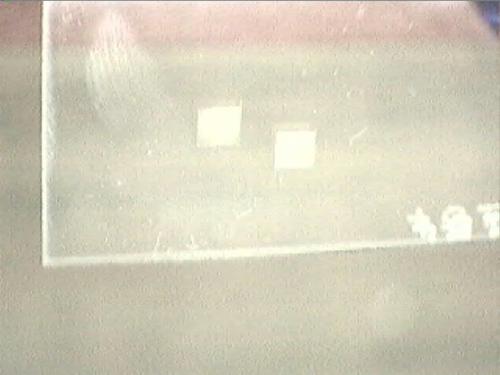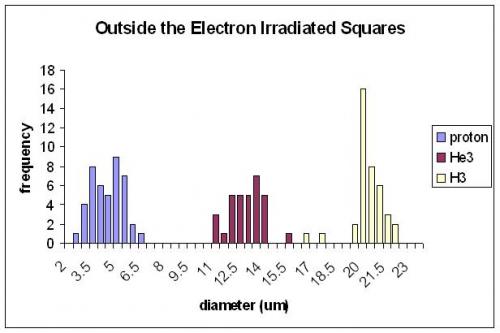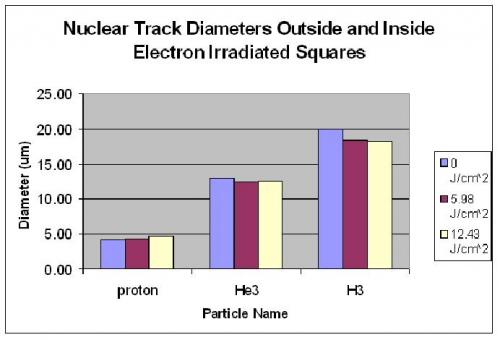Response of Electron Irradiation on Nuclear Tracks in CR-39
The Response of Electron Irradiation on Nuclear Tracks in CR-39
Nathan Lauffenburger and Bruce Wei
The goal was to find how electron irradiation of CR-39 would affect the nuclear tracks in CR-39. It has already been discovered that electron irradiation, alone, increases the bulk etch rate of CR-39. Two squares on a CR-39 plastic at approximately 1 mm2 were exposed to electron beams from our Scanning Electron Microscope. The squares appeared as they do below in the picture.

The surface energy doses were 5.98 J/cm2 and 12.43 J/cm2 from a 15 keV electron beam. The CR-39 was placed into a duoplasmatron, where there are d(d,p)t and d(d,n)3He reactions. This exposed the plastic to 2.847 MeV protons, .661 MeV helium-3s and .881 MeV tritons all at once. At this point the CR-39 was etched in 80oC NaOH for 6 hours. The three following histograms represent the distribution of pit sizes in the areas with different doses.

There seems to be no significant difference between the different particles after electron irradiation. This is shown in the following histogram. The diameter for each particle represents the average of the diameters from the above graphs.
